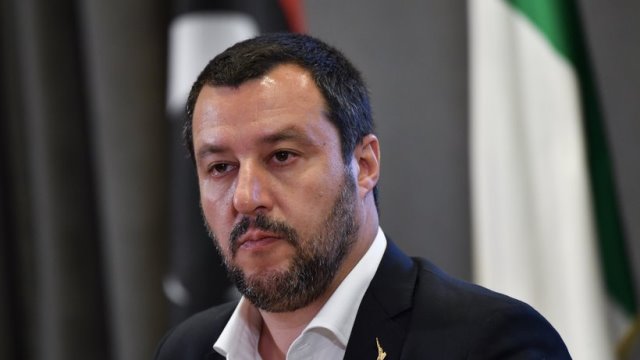ROME: Italy’s far-right has put anti-immigrant rhetoric at the heart of its campaign for the Sept. 25 election, despite the fact the eurozone’s third largest economy would freeze up without overseas labor.
Brothers of Italy leader Giorgia Meloni and the League’s Matteo Salvini have pursued a nationalist “Italians First” agenda that looks set to propel them to power, with pledges to end mass migration a central part of their program.
Meloni has insisted she differentiates between people fleeing conflict and irregular economic migrants.
“Unfortunately our political debate associates immigrants with landings… creating the idea of huge flows… while the actual number of immigrants has been stable for a decade in Italy,” said Maurizio Ambrosini, a sociologist at Milan University.
The political leaders’ views are in line with that of many Italians.
Seventy-seven percent of the population say immigration levels are “too high,” according to a YouGov survey last December for several newspapers across Europe, 10 points above the European Union average.
Their biggest concern about immigration was the fear of a rise in crime. This was cited by some 53 percent of the Italians surveyed, rising to 76 percent of Brothers of Italy voters and 67 percent of League voters.
By contrast, the center-left Democratic Party and the center “see immigrants as a resource for the Italian economy,” said Ambrosini.
But they often have difficulty explaining this to their voters “because it is an unpopular subject, and it is easier to have a debate about exclusion and hostility, which are immediately understandable.”
Yet migrants are a potential lifeline for Italy, which could lose more than 20 percent of its population in the next 50 years due to a declining birth rate, according to official figures.
This decline is accompanied by a general ageing of the population.
In a report last year, the ISTAT national statistics agency warned of the “consequences [of this trend] for the labor market” and “the pressure the country will have to face” to finance its pensions and health system.
The labor market is already heavily dependent on immigration, notably for low-skilled jobs in agriculture, construction, home help and hospitality.
Italy’s estimated 2.5 million legal immigrants account for more than 10 percent of the workforce.
This dependence was laid bare during the coronavirus pandemic, when, with the risk of crops rotting in the fields, agricultural producers chartered plans to bring in seasonal workers from Romania and Morocco.
At the time, one grower in the north of Italy, Martin Foradori Hofstatter, explained to AFP: “In theory, I could have found workers here in Italy but now Italians do not want to work in the fields or the vineyards.”
On Sept. 18, Salvini offered his solution to stop the emptying of many Italian villages: “We don’t need migrants to repopulate villages. Let’s make Italians pay less tax and you’ll see how they repopulate these small places.”
But Ambrosini cautioned, “Complex themes… don’t lend themselves to simple election campaign slogans.”__Daily Hurriyet





